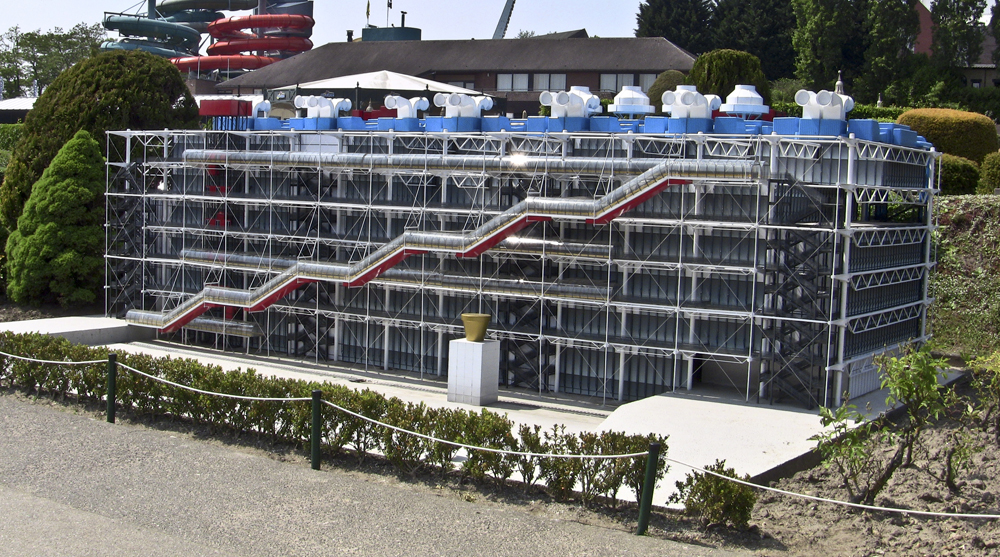When looking to create the next world-famous landmark, governments throughout history have held open architecture competitions to source their designs. Not only do architecture competitions bring in a great variety of designs and ideas, they create a sense of collaboration between the public and the government. It’s a chance for the public to have an input on the buildings and monuments they live in every day.
Here are three of some of the world’s most famous and iconic landmarks that were designed by winners of architecture competitions.
1. Houses of Parliament
The British Houses of Parliament were designed by an architecture competition entry. Image source
Following the Fire of 1834, the British Houses of Parliament were left in ruins and the UK government was temporarily homeless. A Royal Commission was established which launched an open architecture competition to design the new Houses of Parliament.

Artist rendition of The Burning of the Houses of Lords and Commons by J. M. W. Turner (1775–1851) Image source
It was decided that the new Parliament building would reside on the same site as the original as many believed the location was of significant importance to British politics, with both ancient royal and Christian associations. It was also a requirement that submitted designs should be in the Gothic - or Elizabethan - style, a decision that was political as well as in keeping with architectural trends. The long conflict between England and France from 1792 to 1815 meant that the classical style often associated with France during the French Revolution would not have been appropriate for one of England’s national landmarks.

Westminster Bridge and House of Parliament postcard art, c.1910. Image source
Instead, Gothic was seen as Britain’s national style and was thought to have originated there, and had religious resonance as the style of the Great British medieval cathedrals. The architecture competition received a total of 97 entries, of which Charles Barry’s design was chosen as the winner in January of 1836.
2. Sydney Opera House
Sydney Opera House is an iconic landmark that was designed as an entry for an architecture competition in 1956. Image source
Now one of the world’s most iconic landmarks, the design of the Sydney Opera House was the winning entry of an international architecture competition to create a dedicated performing arts centre in Sydney, launched in 1956 by the New South Wales Premier, The Hon. Joe Cahill.
The Sydney Opera House was designed by relatively unknown architect Jørn Utzon as his entry in an open architecture competition. Image source
A major advocate for the opera house was English composer Sir Eugene Goossens who was conductor of the Sydney Symphony Orchestra from 1947, claiming that the previous facilities were not adequate according to a report in the Sydney Morning Herald at the time:
“Mr Goossens ... felt that ... in Australia there was a challenging situation from which something fine could be created for music, and for the people. His ambitions include a fine concert hall for the orchestra, with perfect acoustics and seating accommodation for 3500 people, a home for an opera company and a smaller hall for chamber music. He said he saw no reason why a city the size of Sydney, with such keen music interest, should not have these.”

The Sydney Opera House’s curved, sculptural shape was a change from the rectangular and cube shapes of modernist architecture. Image source
Jørn Utzon was a relatively unknown architect at the time, but still his vision for a sculptural, curved building on the Harbour was a novel and refreshing change from the rectangular and cube shapes of modernist architecture and was selected from the 200+ entries that entered the architecture competition.
3. Centre Georges Pompidou

Paris’ Centre Pompidou was the winning entry from an architecture competition in 1969. Image source
In an attempt to renew the idea of Paris as a leading city of culture and art, Président Charles de Gaulle selected the Plateau Beaubourg as the new site for a large, free public library, as one did not exist at the time. A year later in 1969 the new president inherited the Beaubourg project and decided the location should also include a centre for the contemporary arts, and during development it also became home to the IRCAM (Institut de Recherche et Coordination Acoustique/Musique).

Président Charles de Gaulle reinvigorated the Plateau Beaubourg, making Paris the centre of art and culture. Image source
In order to select an innovative design in keeping with the ambitions of the project, the president held an international architecture competition with world-renowned architects Oscar Niemeyer, Jean Prouvé and Philip Johnson making up the jury panel. Of the 681 competition entries, many were surprised when relatively unknown architects Renzo Piano and Richard Rogers were chosen as the winners.

The Centre Pompidou stands out on the Paris skyline. Image source
Their concept - depicted in one of their competition drawings as a collage - portrayed the museum itself as movement, exemplifying constructivism and conceived of a high-tech modern cultural centre the likes of which the world had never seen before.
Could you design the world’s next iconic landmark? Take part in one of our open architecture competitions and put your creativity to the test.
Top 3 Reasons Why You Should Enter Architecture Competitions
Curious about the value of architecture competitions? Discover the transformative power they can have on your career - from igniting creativity and turning designs into reality, to gaining international recognition.
Learn more



























